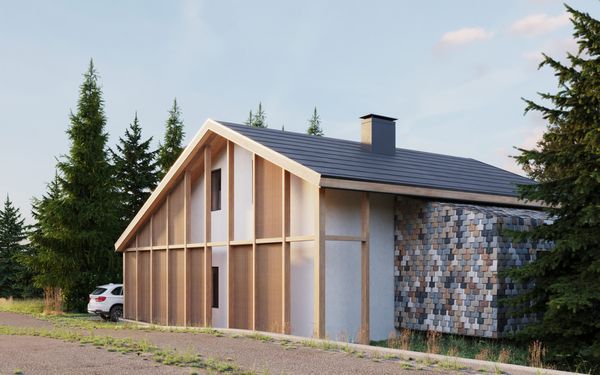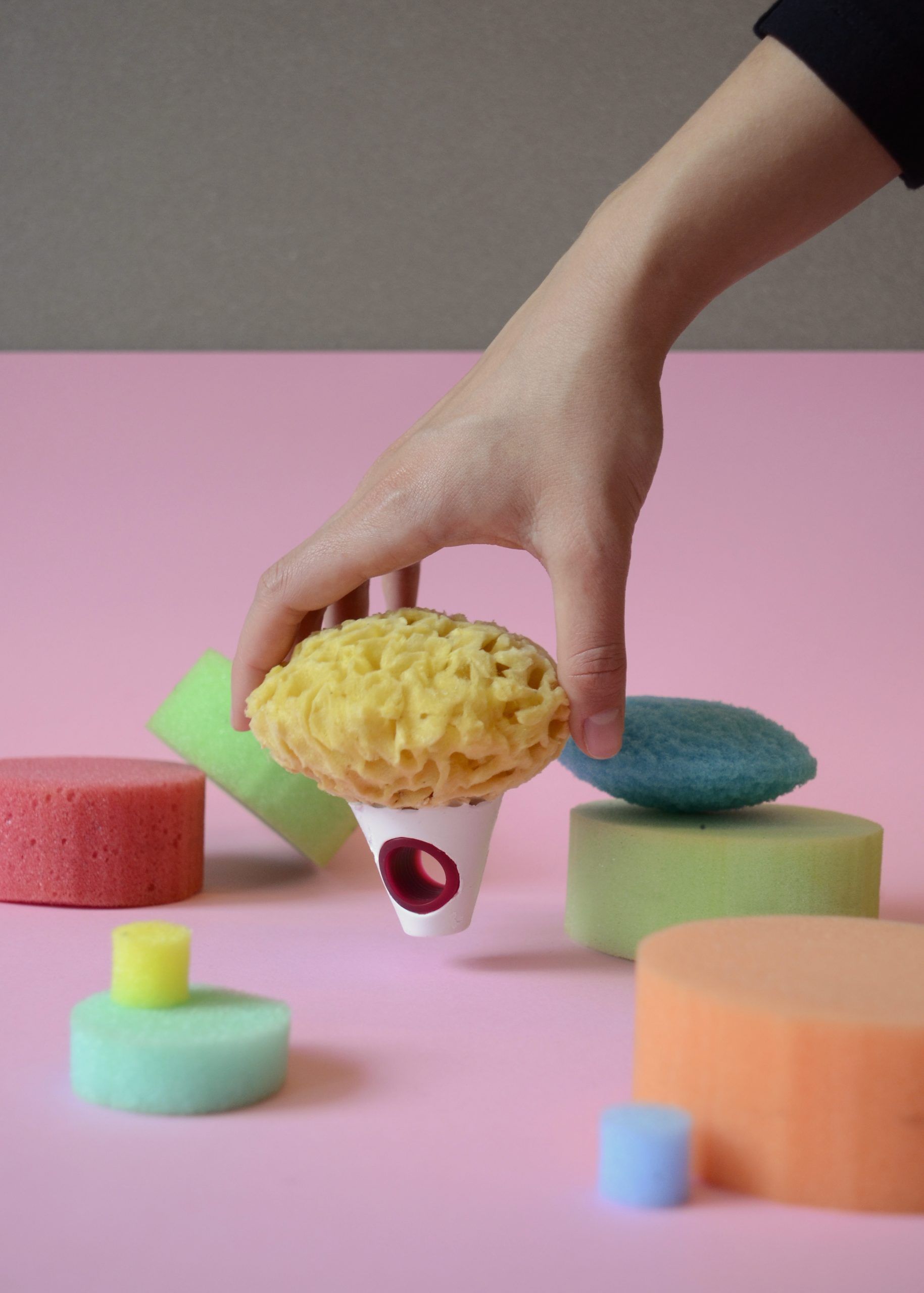Experimentalist attitude, bravery, humility. This is how we can describe jewelry designers Eszter Anna Balázs, Judit Jeney and Eszter Seres the best, who showcased their works to the audience of Art Jewelry Night in the framework of a special exhibition a few weeks ago. We realized it already then and there, in the dark cellar: these girls are definitely worth our attention!
As an official media partner of this year’s Art Jewelry Night event series, HYPEANDHYPER also attended the exhibition opening and award ceremony held on September 18, where the prize for the most exciting exhibition was awarded to the show titled XYZ. The pieces of the three young designers, Eszter Anna Balázs, Judit Jeney and Eszter Seres are fresh and bold, and earnt not only the attention of HYPE’s editorial staff, but that of the audience, too.
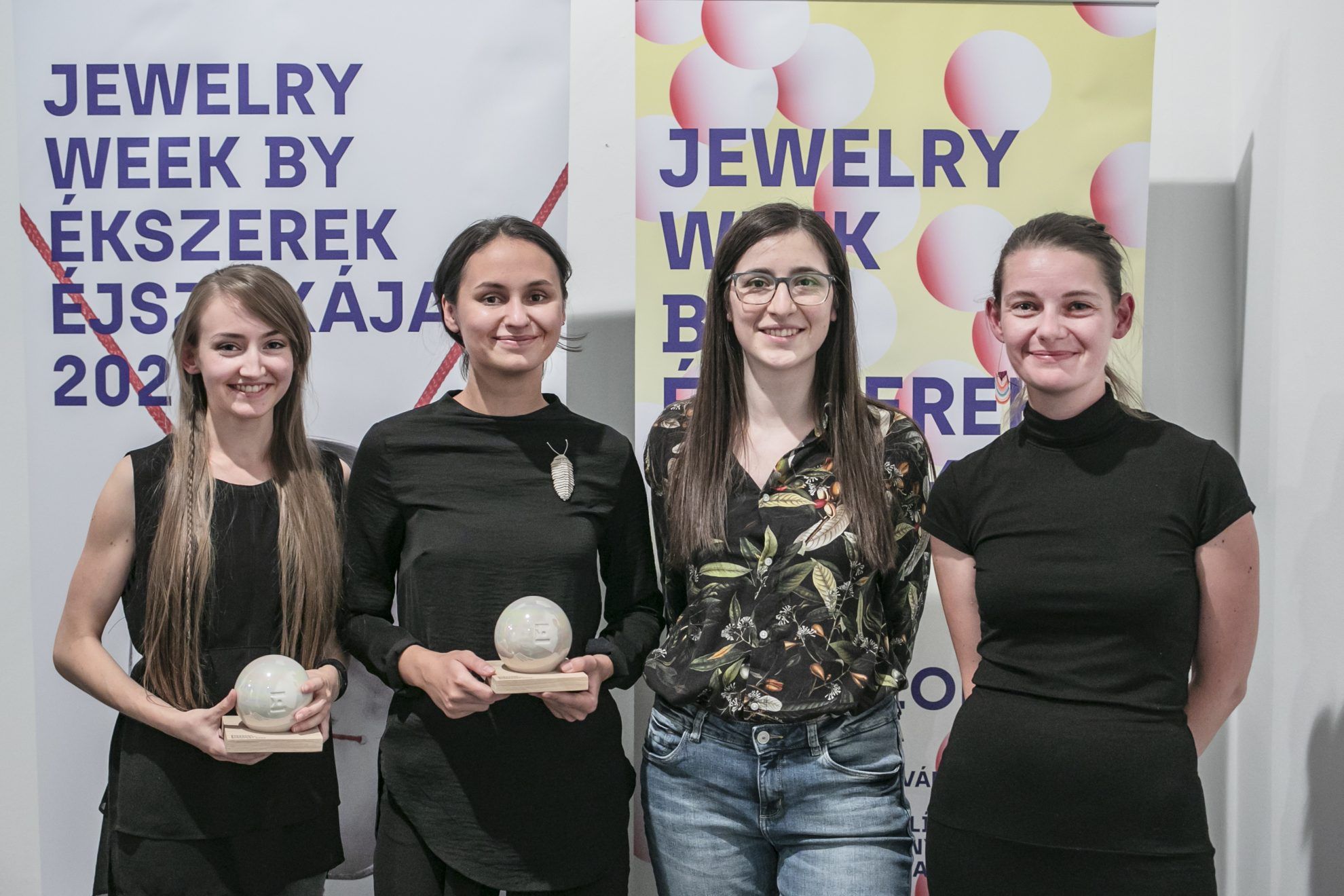
If we had to introduce Art Jewelry Night to a complete stranger, XYZ would for sure be one of the exhibitions we would tell them about – this mini-show was a perfect example of all the diverse meanings contemporary jewelry can carry. It can mean objects that look much more like a statue or a prop to a spectacular performance than as a fashion accessory used in our everyday life. It can mean objects that are made of kitchen sponges, building mesh or cork, instead of the regular precious metals. Objects that offer a novel experience to their wearer due to their unconventional design and materials (and where wearing as a phenomenon is also many times questioned or superseded). Objects that we are trying to get to know carefully, that we wish to solve. The XYZ exhibition awarded by HYPE invited viewers to be a part of this exciting game.
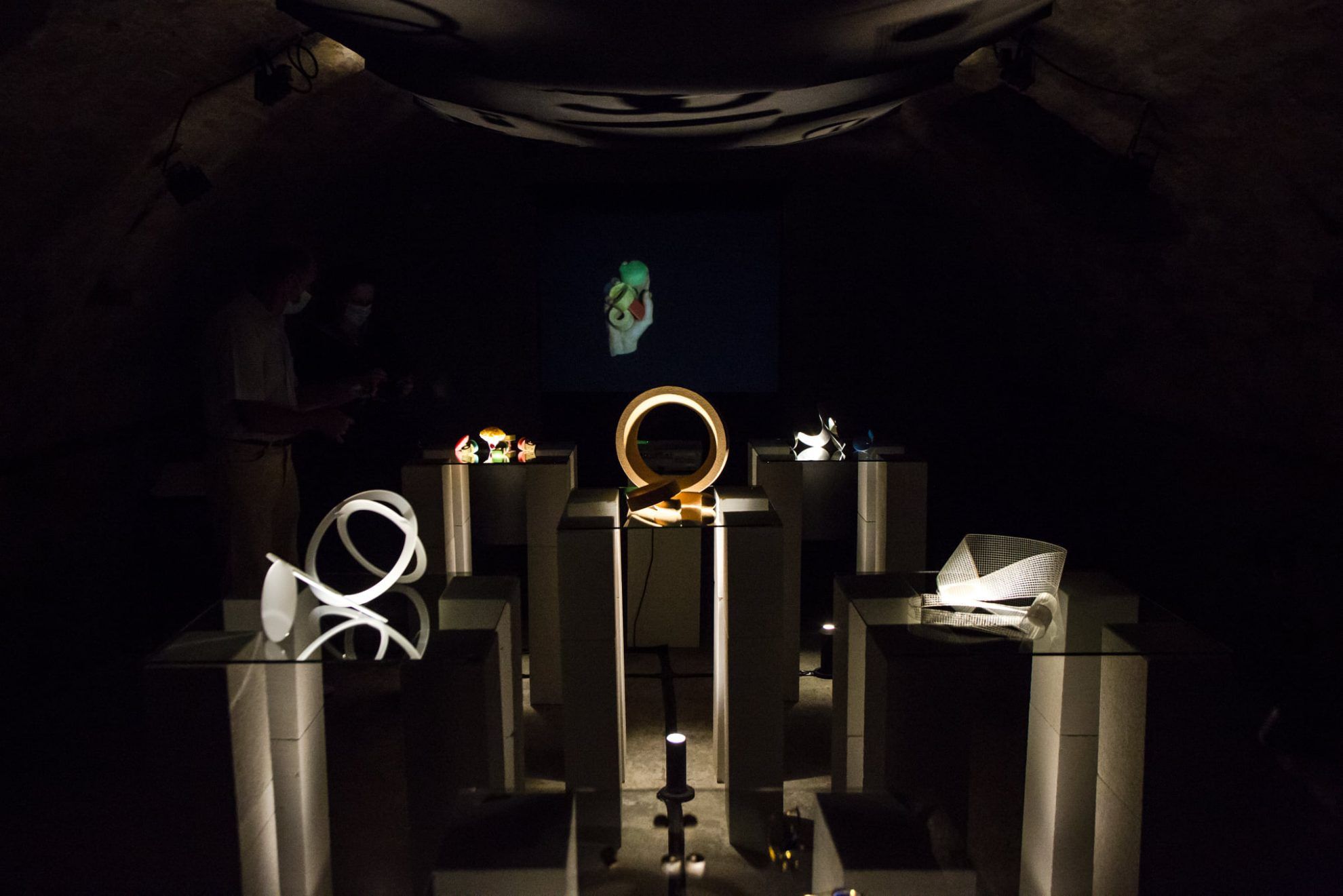
We were welcomed by “illuminating jewelry” in the dark cellar of a tenement house in Papnövelde utca. We only started to get to know the objects literally placed in the spotlight slowly: we were intrigued by the stone-like wreath, the group of the intertwining ethereal circles and the colorful and joyful rings resembling toys. The installation elements set up in the exhibition space and the tables built of Ytong brick and glass panels resonated well with the giant foil sheet seen in the courtyard of the tenement house. However, XYZ is not only about objects: it tells about a new, young jewelry designer generation, too.
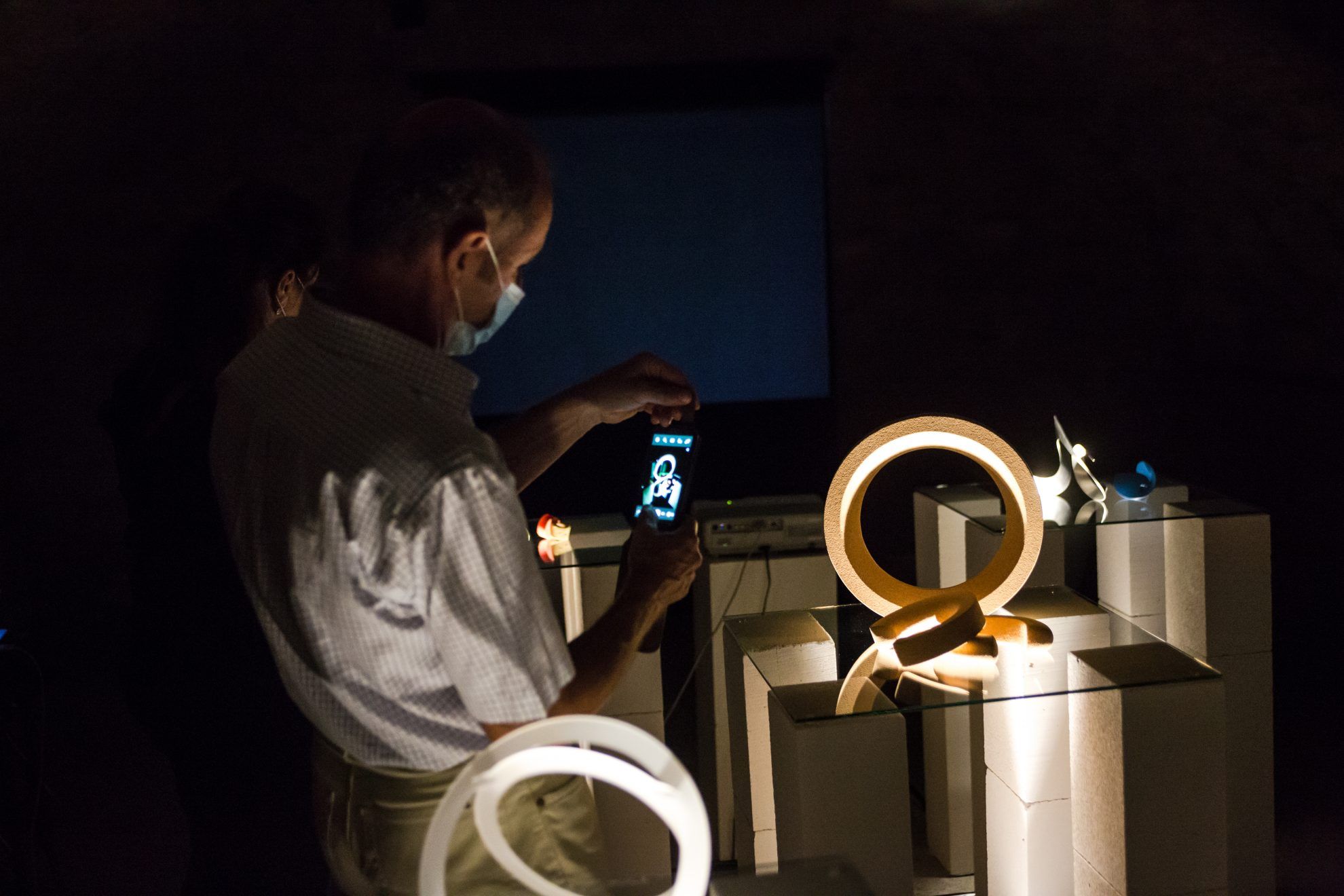
The story of Eszter Anna Balázs, Judit Jeney and Eszter Seres started many years ago in MOME, where all three of them arrived after finishing the metalworking vocational course. The two Eszters got to know each other at the metalworking course, and by the third year of the university, only the three of them remained and actually obtained a diploma this summer out of the already small number of students. While they have many features in common, they are also different in many aspects, and we can also consider the title of the exhibition a great reference to this: three creators with different backgrounds, starting from the same origo on the three axes of the coordinate system.
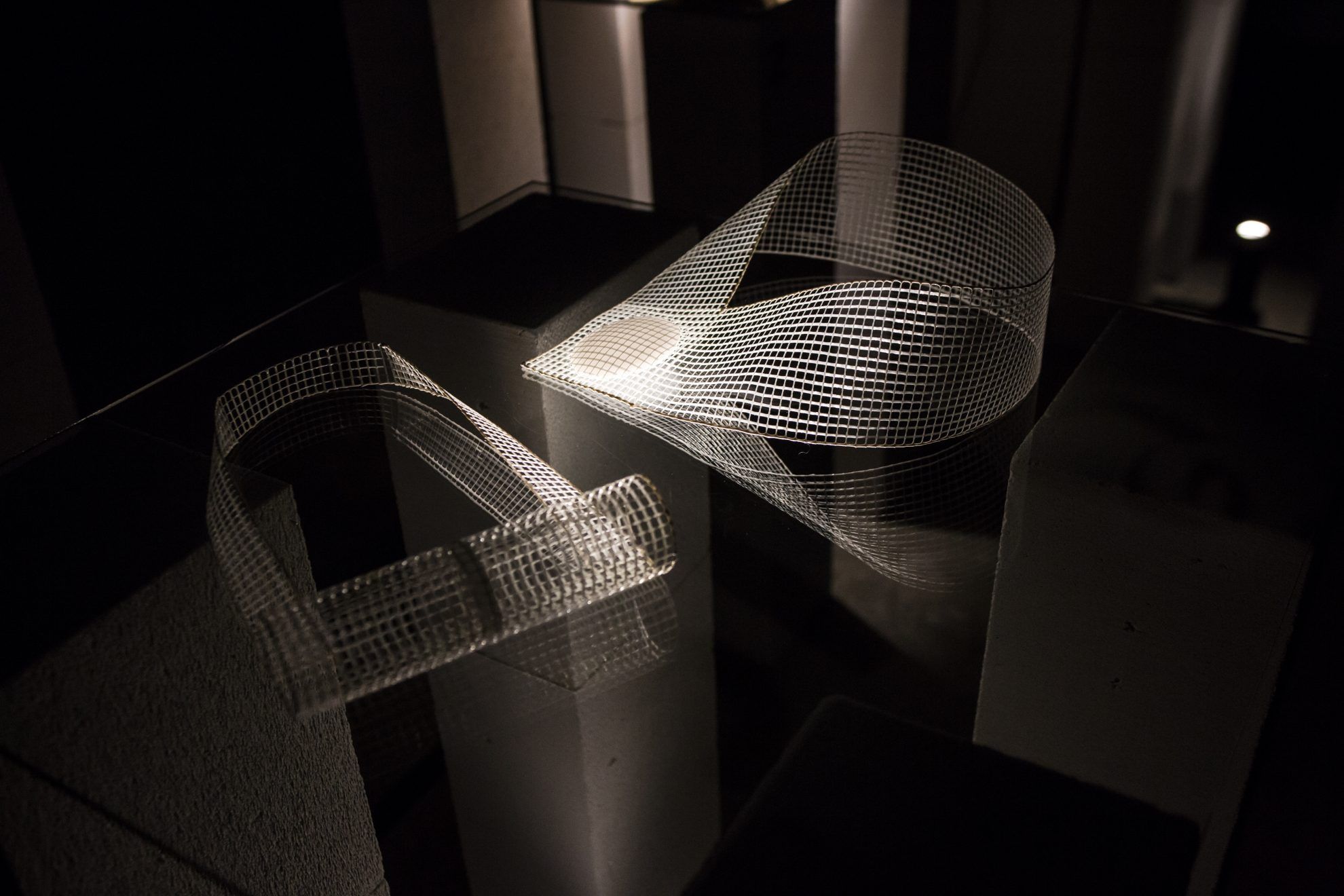
The girls selected the materials of the XYZ exhibition from their jewelry pieces made during their university courses: along the “Single material jewelry” and “Alternative precious stone” themes included in their syllabus, they all presented their unique responses.
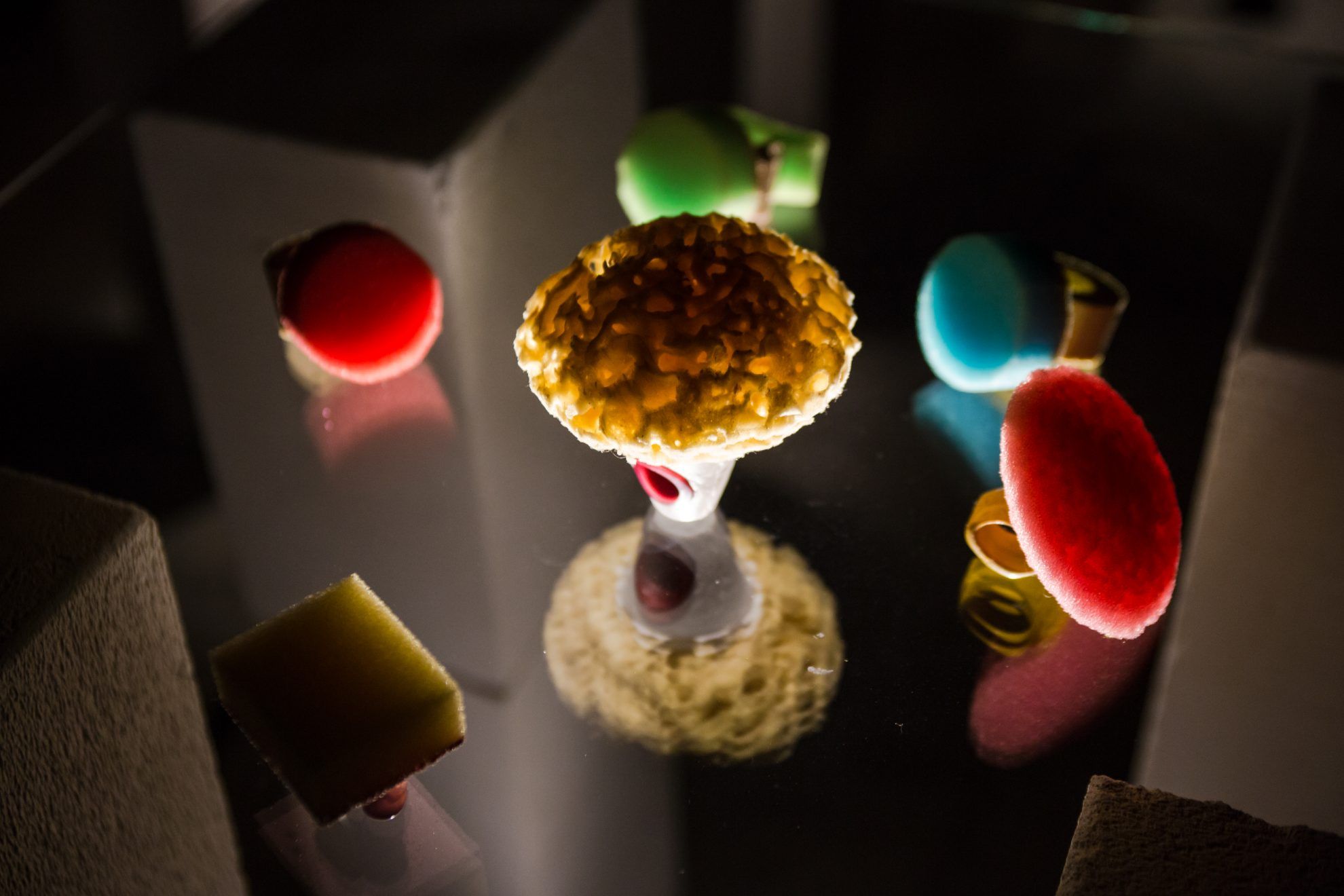
After completing her high school studies, Eszter Seres also tried a bit of graphic design, but she really found herself when she had a direct connection with materials in the course of the metalworking course. For her, contemporary jewelry means the freedom of continuous experimentation, where she can use a material that an ordinary person would perhaps never think of. This is how she ended up choosing cork, which she then transformed into a necklace along the principle of “simple but great”: she glued cork available in sheets and then reached its final form with jigsaw.
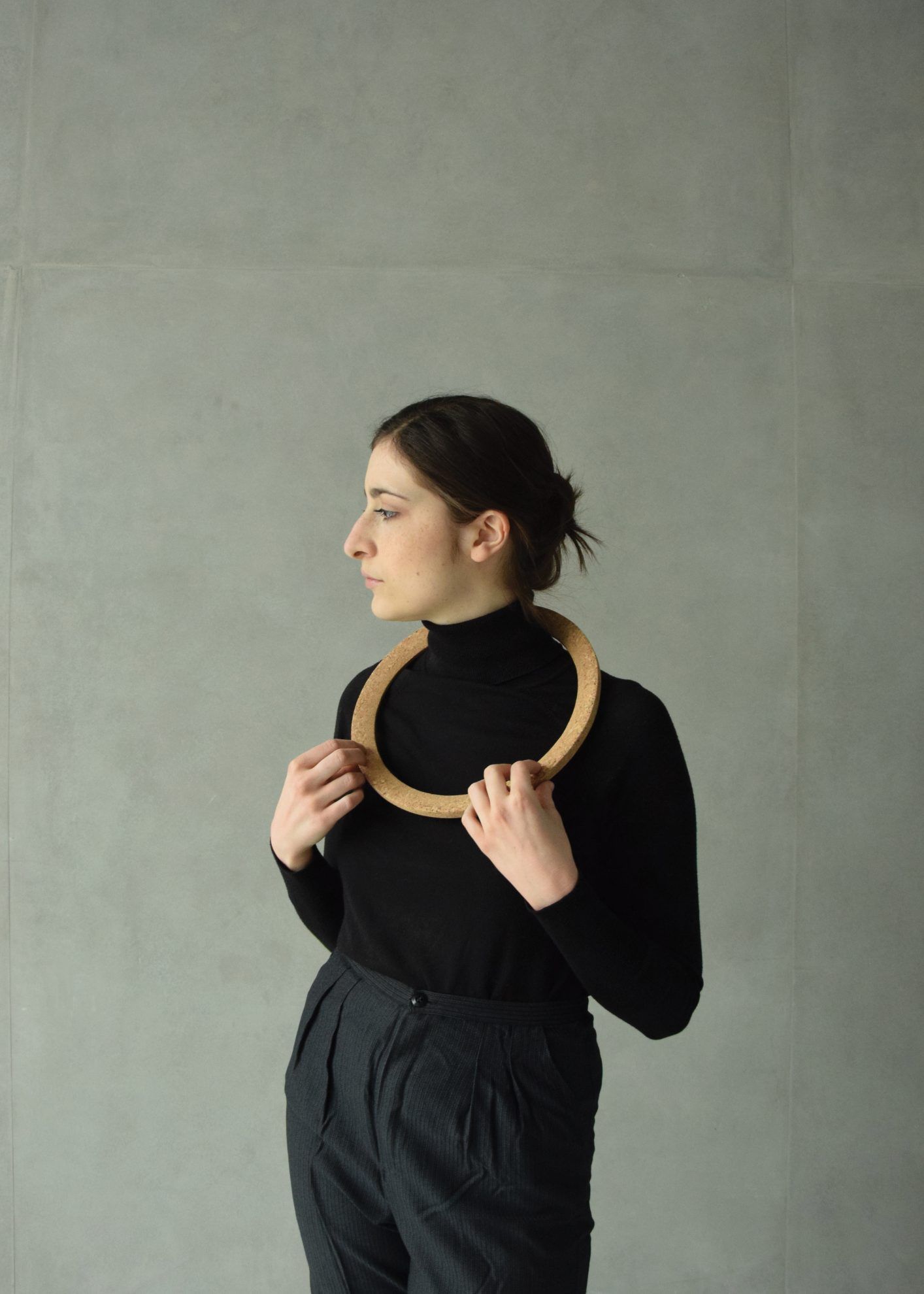
Eszter choose the synthetic, colorful sponge as a precious stone, and she also designed a likewise spectacular ring made of the combination of natural sponge and silicone.
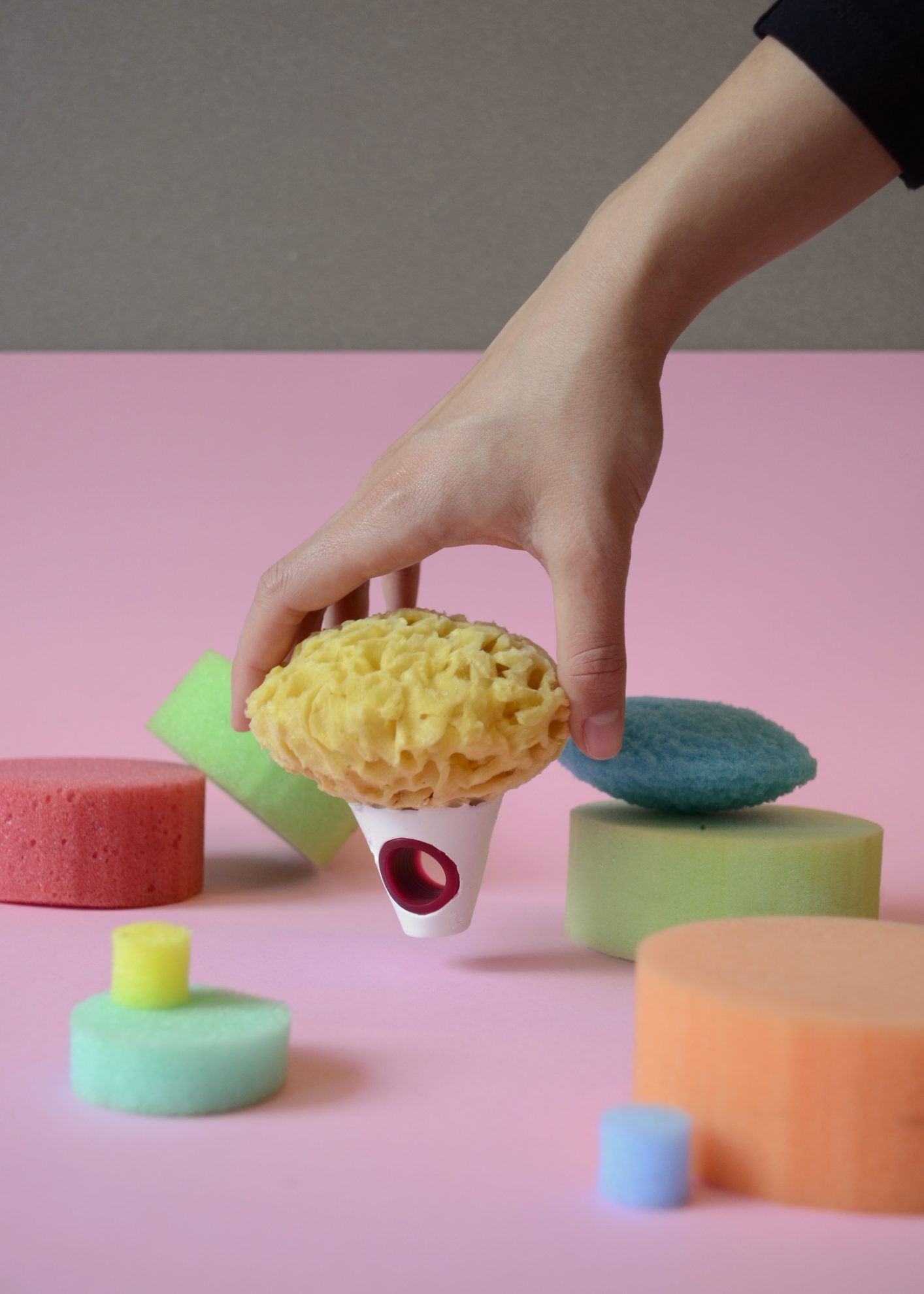
The snake-like aluminum ribbon which is spectacularly large compared to the size of ordinary jewelry was made by Judit Jeney. Beyond all doubt, this piece of jewelry caused the most headache for guests, as the mode of wearing is far from obvious here. The pair of the jewelry coiling around the upper body organically is a smaller earring painted blue and made of oxidized aluminum, playing with covering the ear of the wearer.
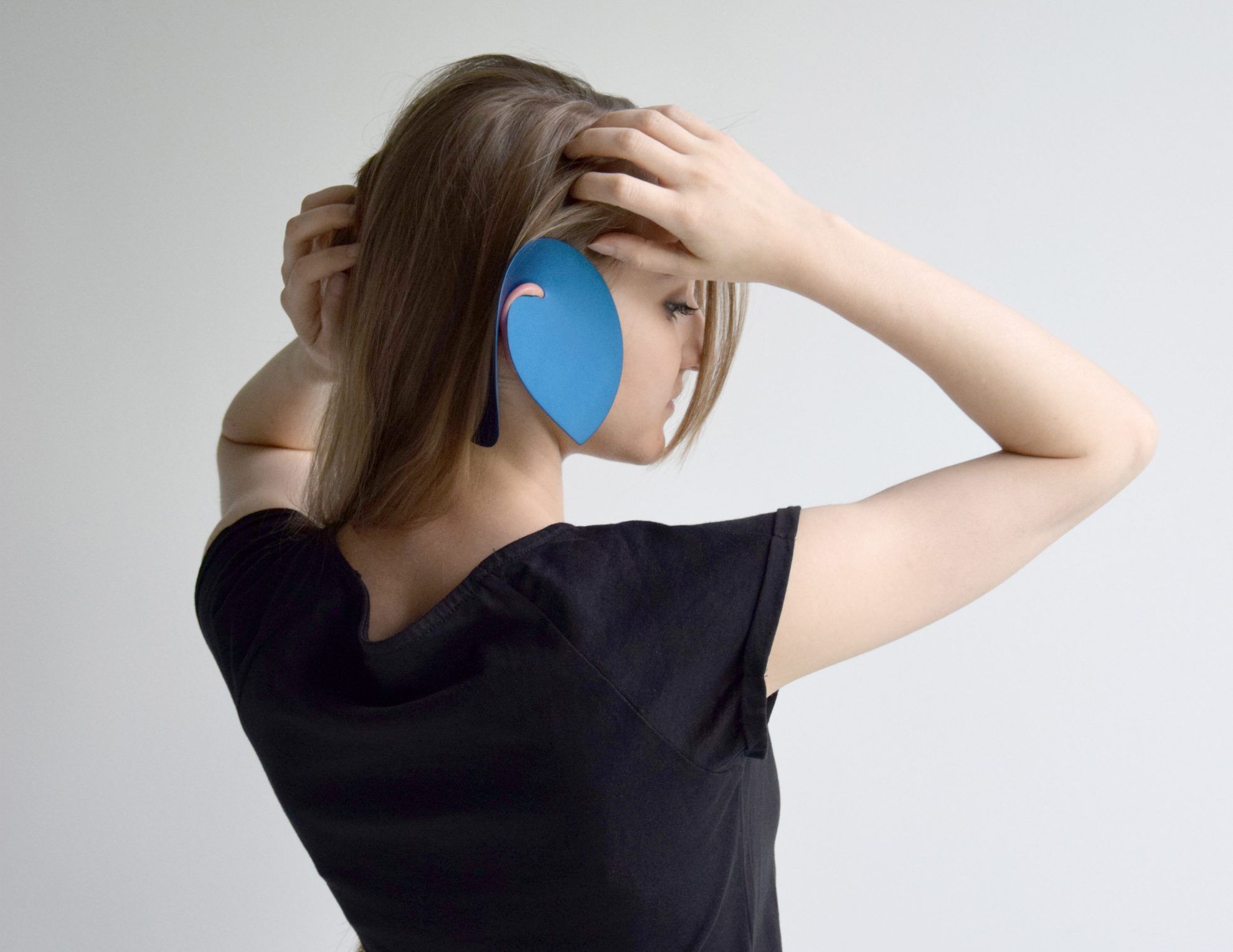
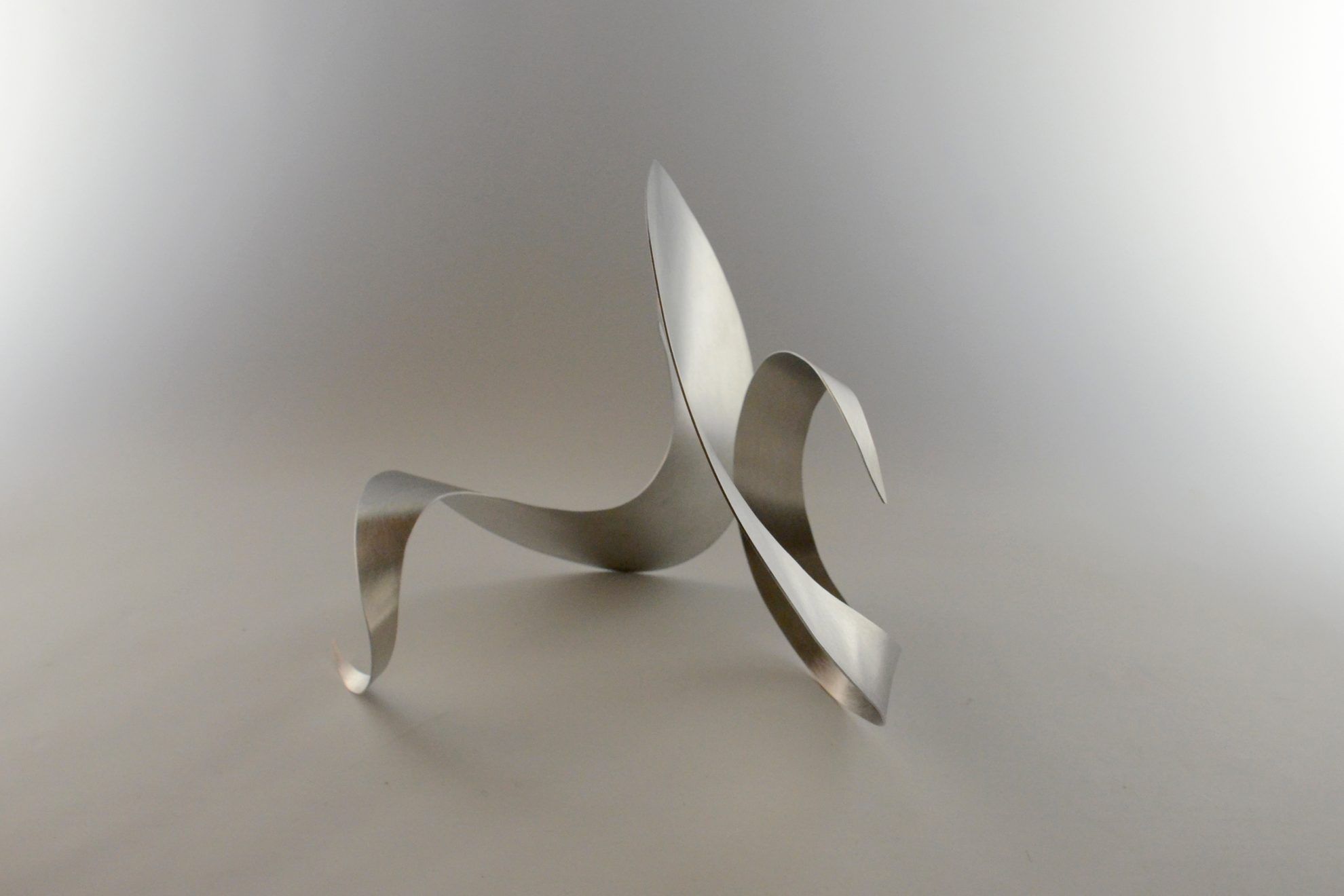
In the case of the filigree plexiglas necklace, the designer started off from the observation of busts, and experimented with how it is possible to draw the attention to the human face with a minimal toolset, in an extraordinary manner.

In the case of another jewelry collection, Judit chose colorful plexiglas as her precious stone, and polished it to resemble a lens: the “precious stone” with yellow brass casing is placed on an unusual point of the body, between the forefinger and the thumb, where it is transformed into a magnifying glass.
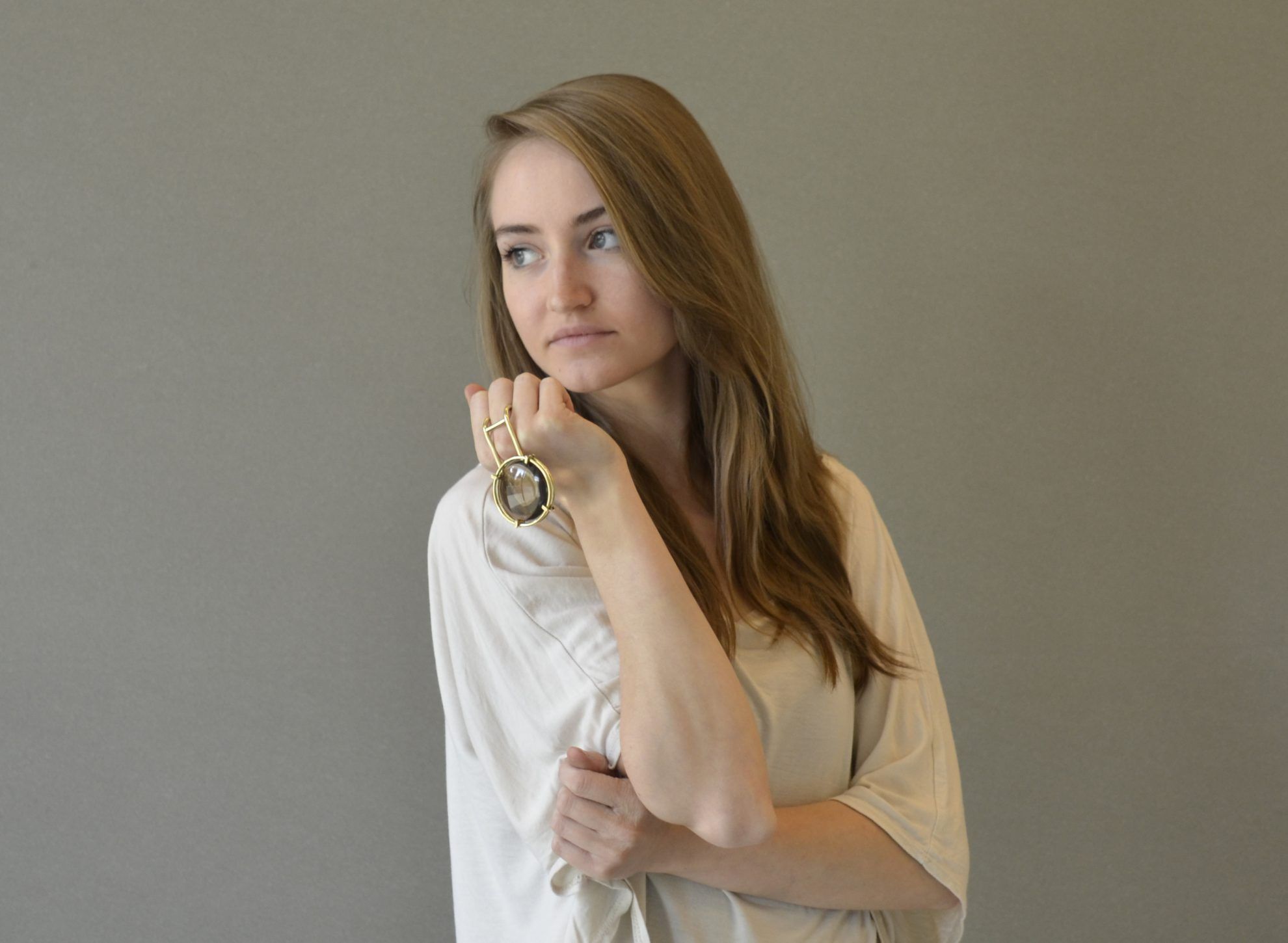
Eszter Anna Balázs created an ethereal and elegant necklace from a completely profane material: dryvit mesh. The cylindrical pieces and items looking like a collar lend different characters to their wearer.

When designing the single-material jewelry, the designer was looking for an alternative to pieces that can be hanged on the wearer’s ear: she experimented with organic shapes, various sizes and shapes of cuts, and chose plexiglas, birch and beech, as well as aluminum and brass as the basic material of the pieces.
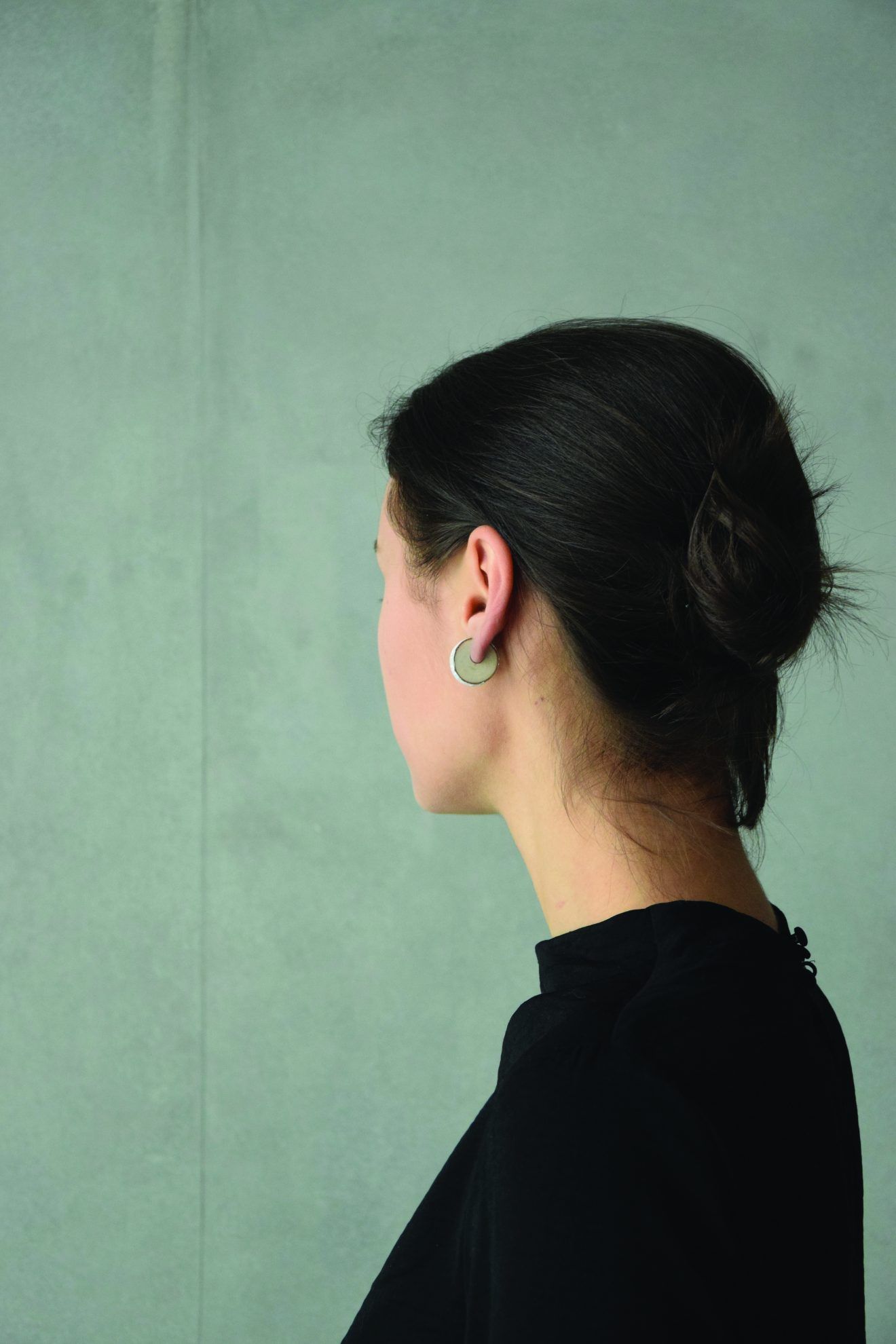
Even though it was not displayed at the exhibition in September, the university project in which they had to design Judaica objects remained a defining experience for the girls. Eszter Seres opted for playfulness once again: she designed mezuzahs shaped from colorful clay, Judit Jeney enclosed the prayer written on a piece of parchment paper in a transparent box made of plexiglas, while Eszter Anna Balázs designed a playful paper jewelry in relation to the bat mitzvah ceremony.
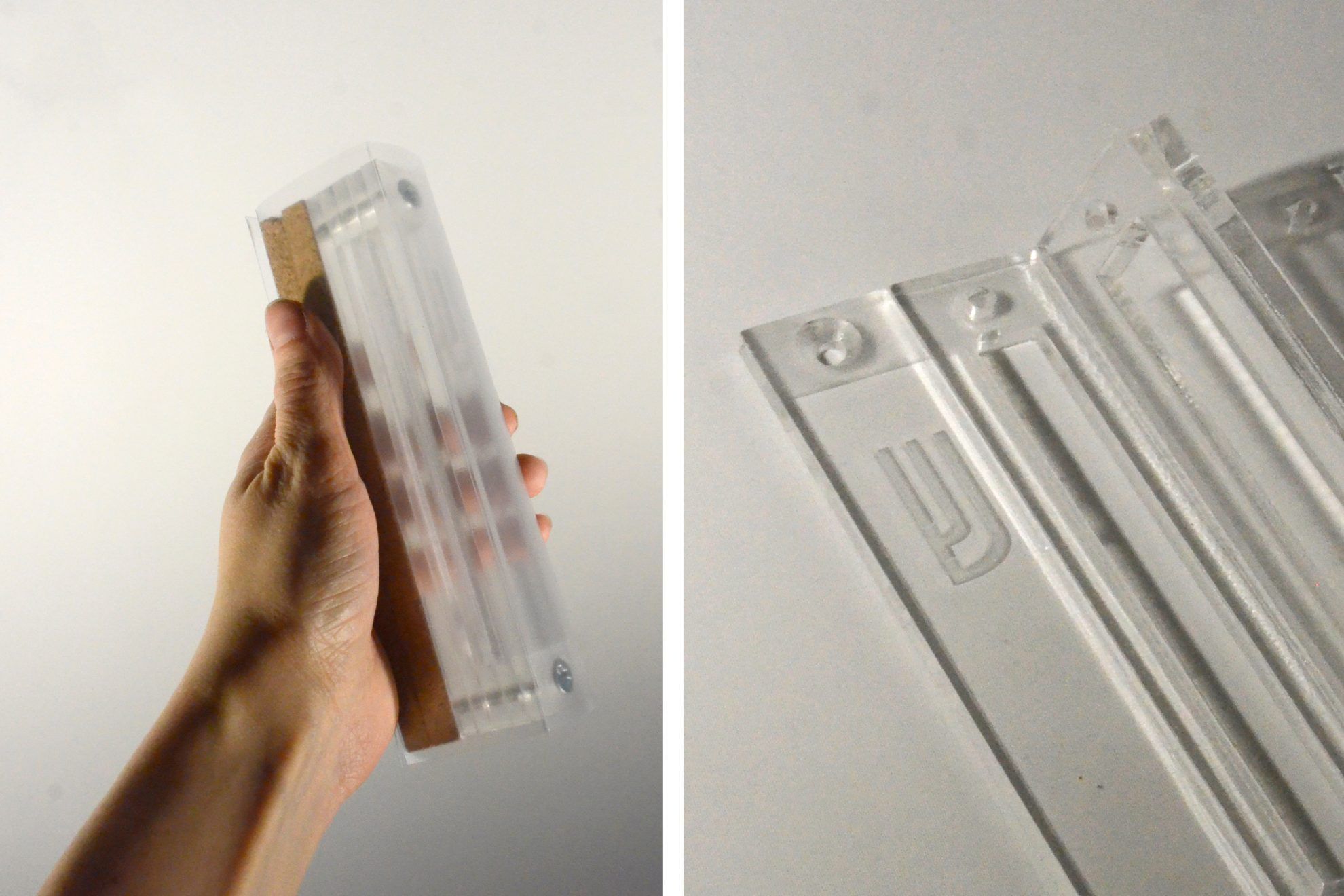
XYZ also proved to visitors that they should not be afraid of contemporary jewelry, quite on the contrary: they should get in direct contact with the object, as many times visual perception can be misleading. Eszter Seres’s cork necklace looks like stone until we put it on and realize its light yet durable character. We can only discover the greatness of Judit Jeney’s jewelry made of yellow brass if we put the colorful plexiglas lens otherwise looking like glass on our hand and turn it towards the light. Eszter Balázs’s modern clip-ons lie lifeless on the illuminated glass panel until we raise them to our ears and they find their final position on our earlobes.
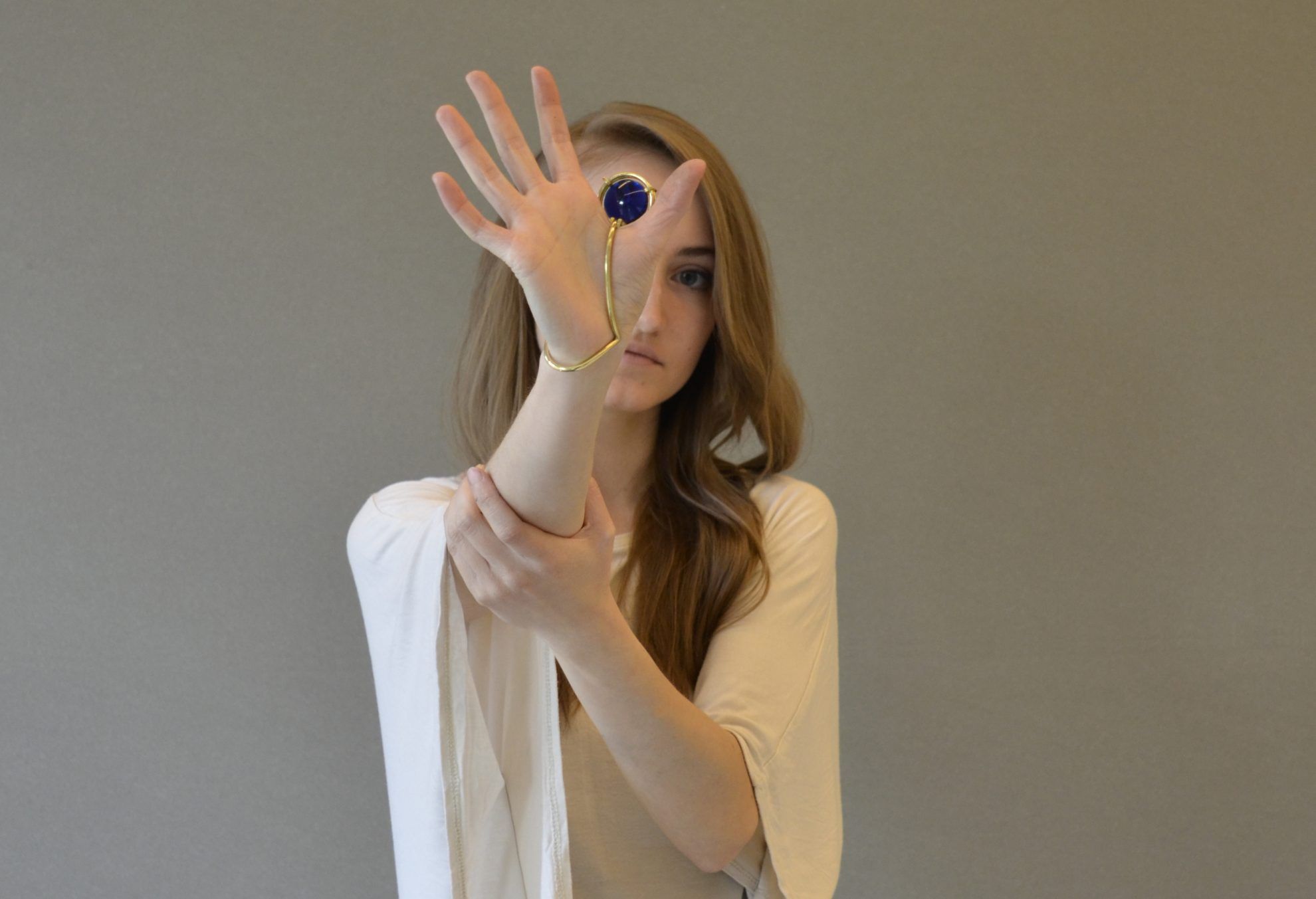
The creators’ take on contemporary jewelry reads quite clearly from the objects exhibited. For Judit Jeney, the most exciting things in designing an object are the questions the given piece of jewelry can trigger in the viewer, and how much the wearer can disregard the usual categories. She herself takes a brave approach to design: she says that even though there are some rules, we shouldn’t be afraid of them – realizing this was the most important message she received within the walls of the university.
“I like that I can use anything” – says Eszter Seres, and highlights that in addition to having an experimentalist attitude, a jewelry designer should also be persistent. Eszter Anna Balázs considers contemporary jewelry an exciting opportunity: for her, this genre is a terrain of continuous experimentation and learning, while the piece of jewelry created is a potential means of communication, at the same time.
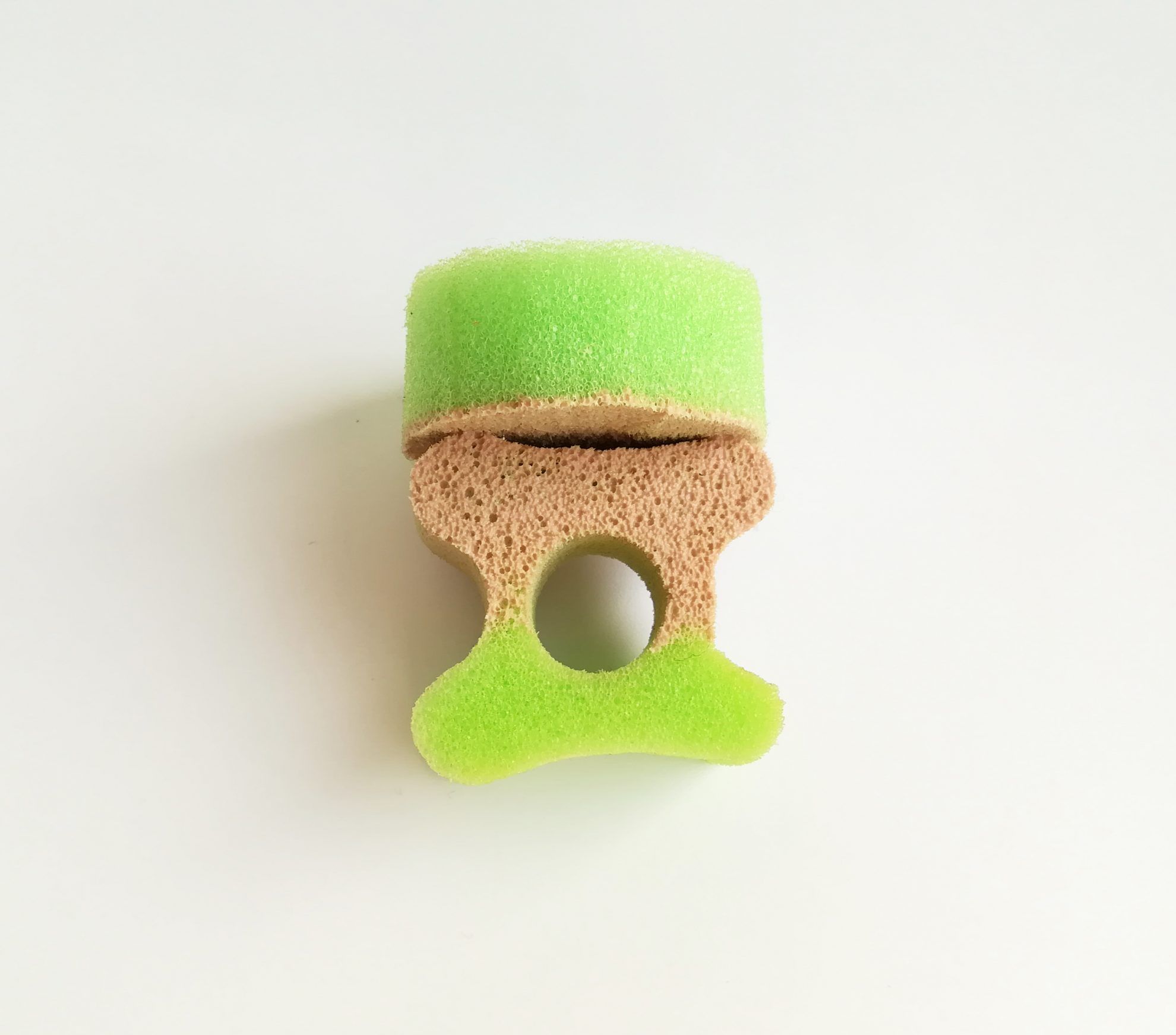
In addition to experimentalist attitude and bravery, there is another element we must mention which the girls have not mentioned, but looking at their works they for sure practice it: professional humility. This was their first joint exhibition, but not the last, for sure.
And what do the young designers have to say to the rising generation? “Be brave!

Fresh, youthful and exotic momentum | Harlequin Chocolates

World-class designers in 360 Design Budapest’s program series
